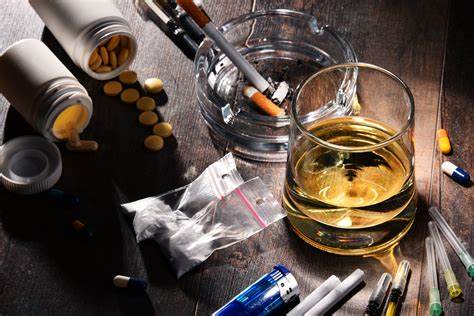Addiction is a complex and pervasive disease that impacts people from diverse backgrounds. This comprehensive guide examines the intricate interplay of biological, psychological, and social factors in addiction. It offers valuable insights for individuals dealing with this condition and those who support them. This resource serves as an essential reference for those navigating the challenges of addiction on the path to recovery.
Definition
Addiction disease is treatable and manageable with involving complex interactions among brain circuitry, genetics, the environment, and an individual’s life experiences. People with addiction use substances or engage in behaviors that become compulsive and often continue despite harmful consequences.
Prevention efforts and treatment methods for addiction are generally as successful just like any other chronic diseases.
Pathophysiology
Addiction disease uses the brain system that involves reward, motivation, and memory. It’s about the way your body craves a substance or behavior, especially if it causes a compulsive or obsessive pursuit of “reward” and lack of concern over consequences.
The neuroscience of addiction delves into the intricate workings of the brain and how it is affected by addictive substances. At its core, addiction involves changes in the brain’s reward circuitry. When a person engages in activities that bring pleasure, such as eating or engaging in social interactions, the brain releases neurotransmitters like dopamine, creating a sense of reward and reinforcing the behavior.
However, addictive substances can hijack this system. They often lead to a surge of dopamine far beyond what natural rewards trigger, creating an intense and artificial sense of pleasure. Over time, the brain adapts to this excess dopamine by reducing its own production, which can lead to a decreased ability to feel pleasure from ordinary activities. This creates a cycle where the individual seeks the addictive substance to regain that sense of pleasure, leading to cravings and compulsive drug-seeking behavior.
Additionally, addiction is associated with changes in other brain regions responsible for decision-making, impulse control, and judgment. These alterations can lead to impaired decision-making, making it harder for individuals to quit even when they are aware of the negative consequences.
Understanding the neuroscience of addiction is crucial for developing effective interventions and treatments that address the underlying biological mechanisms driving addictive behavior.
This is a good video of how drugs affect the brain.
Symptoms of Addiction
There are early warning signs that can be considered as addiction disorder. These signs are divided in three categories.
Psychological:
- Depression, anxiety and stress
- Lying
- Secretiveness
- Mood swings, agitation
- insomnia
- Cravings
Behavioral:
- Lack of interested in personal hygiene and/or grooming habits
- Changes in social groups, new and unusual friends, odd phone conversations
- Drug paraphernalia such as unusual pipes, cigarette papers, small weighing scales, etc.
- Stashes of drugs, often in small plastic, paper, or foil packages
- Stealing
- Financial problems, poor money management
- Poor or lack of judgement
- Development of unhealthy relationships or bad influences
- Sudden and unexplained absences, strange disappearances, long periods without contact
- Neglecting responsibilities
Physical:
- Runny nose
- Blood shot eyes, dilated pupils
- Repetitive speech patterns
- Pale, undernourished, weight loss
- Muscle aches
- Fatigue
- Excessive sweating
- Sluggish behavior
- Worsening skin conditions
- Dental issues with blackened, rotting, stained and crumbling teeth
Causes
There are complex of factors that contributed to addiction disease causes such as cultural, social and situational factors with psychological and biological factors and personal values to influence addiction. There are some studies showed genetics such as addictive personality disorder; individualized psychological factor such as impulsiveness or sensation-seeking; or psychopathology such as negative effects of trauma can cause addiction tendencies. There are also other studies that emphasizes on the social and economic factors that shape the behavior of addiction such as strength of family and peer relationships and absence of educational and employment opportunities.
The most common types of addictions are as follows:
- Nicotine- tobacco smoking and chewing, vaping.
- Alcohol- common among adults over the age of 18.
- Pain killers-opiate, oxycodone, fentanyl, cocaine, heroin.
- Depressive agents- sedatives and tranquilizers to manage stress, anxiety and sleep disorders.
Conclusion
Addiction is a chronic disease. It has genetic and environment components that turns the person into an addict. If you look back at the family history and social situations, there must have been a trigger event that turned into addiction behaviors. Also, there were some psychiatric mental illnesses such as anxiety, depression, bipolar, ADHD, in the family history. The combination of situation stress such as divorce, death, isolation, abandonment, abuse, the only way to cope with the situation is to be high on drugs, “to get out of reality”.
People with addiction disease did not wake up and decide to be an addict that day. It is a daily struggle to say to yourself “don’t relapse today”. They have poor coping skills, and their emotions cannot handle stress or make a decision. If a problem cannot be solved to the standard solution, being high and hoping that the problem will resolve itself is the solution in their minds. However, once they come down from being high, the problem is worse than before. You have to look at the addiction as a disease they cannot help themselves. The person you once knew is gone, because the addiction disease has taken over the physical and mental status of the person.
